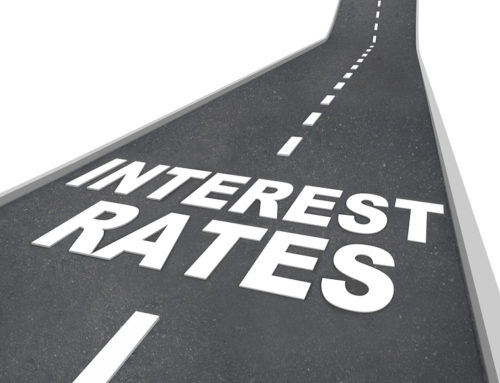You need a new mortgage and after contemplating whether to go fixed or variable, you have chosen that a variable rate mortgage is right for you. But are all variable rate mortgages equal? Definitely not! In fact, you could be comparing two seemingly similar variable rate mortgages, yet one will be more costly than the other. In order to truly determine the best variable rate mortgage for you, you will need to ask questions before making your final decision.
How is the penalty calculated?
The standard method for calculating penalty on a variable rate mortgage is three months simple interest. This would be calculated by taking your remaining balance and multiplying it by your current rate and then dividing it by 4. For example, if you owe $300,000 on your mortgage, and your rate is 3.20%, your penalty would be $2,400. The formula would look like this:
MTG amount x interest rate / 4 = Penalty
$300,000 x 0.0320 / 4 = $2,400
Some lenders will use prime rate to calculate three months interest, which will drive up your penalty. Currently, prime rate is 3.95%. Let’s now take a look to see how the penalty would change when using prime rate.
We’ll take the same $300,000 mortgage, however this time, the penalty will be based on 3.95%. The penalty, in this case, would be $2,962.50, or $562.50 higher than it would be if the contract rate were used (the rate your payments are based on).
The third method of calculating penalty would be a set percentage of your remaining balance, which can be as high as 3%. In this case, the penalty will skyrocket. Using the same $300,000 mortgage, your penalty here would be a whopping $9,000 based on 3%. Again, the 3% has nothing to do with your actual interest rate. It’s a completely separate figure, which would be outlined in your mortgage commitment. The formula is fairly simple:
MTG Amount x percentage = Penalty
$300,000 x 0.03 = $9,000
A variable rate mortgage with this type of penalty can seem like a great deal, but if you found yourself in a situation where you needed to break the mortgage early, then this can be a costly choice. Few people go into a mortgage with the expectation of breaking it, yet so many people do. Sometimes life throws you curveballs and you need to unexpectedly end your mortgage early. It can be hard to predict, and five years is a long time.
In addition to the penalty, you would pay a discharge fee, which is typically around $300 with most lenders.
Is there a reinvestment fee on top of the penalty?
Some lenders may also charge a reinvestment fee on top of the penalty. In these cases, it’s usually $500 if you break in the first year, $400 in the second year, $300 in the third year, and so on. Reinvestment fees are fairly rare, however, there are some lenders who use them, so it’s always a good question to ask. Since it’s something that is not very common, it can be easy for a broker to forget to mention reinvestment fees, particularly if he or she does not sell that particular product too often.
Is it compounded monthly or semi-annually?
Most variable rate mortgages are compounded semi-annually, however, there are some lenders who compound monthly. Most of the big banks, as well as a small handful of non-bank lenders, will compound monthly. Let’s compare two variable rate mortgages which are seemingly identical, except for the compounding.
We’ll use a $500,000 mortgage at 2.85% amortized over 25 years as an example. To the unsuspecting mortgage shopper, these two options are equal. However, they will both have different payment amounts.
The payment with semi-annually compounding would be $2,327.91.
The payment with monthly compounding would increase to $2,332. 23. A difference of $4.32 per month.
Compounding period is something that most mortgage professionals will not even mention to their clients… unless you ask.
By contrast, all fixed rate mortgages in Canada, regardless of the lender, are compounded semi-annually.
Is this an ARM, or is it a true variable rate mortgage?
The term variable rate mortgage is commonly used to refer to all floating rate mortgages, however, if we go by strict definition, then this isn’t entirely true. There is a difference between an Adjustable Rate Mortgage (ARM) and a true variable rate mortgage (VRM). As the market has evolved, they have come to be used interchangeably by most mortgage professionals, including myself and including this blog post.
So what is the difference between an Adjustable Rate Mortgage and a Variable Rate Mortgage?
With an ARM, the payment will change along with interest rate. So whenever there is an increase to prime rate, your rate will increase and so will your payment. Just as when the prime rate decreases, so will your rate and so will your payment.
With a VRM, the payment remains the same for the entire term. What changes is the amount of payment that goes towards principal vs interest. If prime rate increases, the interest portion of the payment will also increase, while the principal portion decreases. When the prime rate decreases, the opposite happens of course. This, in turn, affects your remaining amortization.
In the period between July 2017 and February 2019, prime rate has increased 5 times. Anyone with a true VRM during a period like this will find that they are not making a very big dent in their principle. That is unless they increase their payments utilizing their prepayment privileges.
Can you switch lenders mid-term?
There are some mortgage products that have a bonafide-sale clause, which means that you cannot break your mortgage before the end of your term unless you sell your home. This means that you cannot switch lenders mid-term, and you cannot refinance with a different lender mid-term. However, if you need to refinance, you can always do it with the same lender. The problem with that is that you have no control over what rate the lender is going to offer you, and likely, it’s not going to be even close to competitive. If you think there is even a slight chance that you might need to refinance before the end of the term, then I would not choose a mortgage with a bonafide sale clause. Normally, I like to see a difference of at least 0.10% before recommending a product like this. And even then, I suggest proceeding with caution.
Is there anything else unique about this mortgage?
This is also a good question to ask that really should cover all of the above. However, you’ll usually need to be specific in order to ensure that you are getting the big picture. Mortgages have a lot of moving parts, and if you are dealing with an unseasoned mortgage professional, or one who is putting their own best interests ahead of yours, then you’ll want to ensure you ask specific and direct questions to ensure you know exactly what you’re getting yourself into.








[…] majority of people currently in variable rate mortgages would be paying somewhere between 5.20% to 6.20% with the odd […]